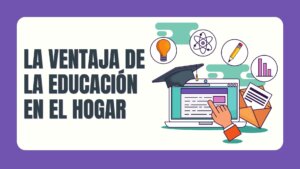
In today’s digital age, virtual learning for kids has become an increasingly popular method of education.
With the advancement of technology, children now have the opportunity to access a wide range of educational resources and engage in learning from the comfort of their homes.
This article aims to explore the benefits and challenges of virtual learning for kids and youth, emphasizing how this innovative approach is transforming traditional education.
Let’s delve into what virtual learning is, and the advantages it brings to both young learners and adolescents.
What is Virtual Learning? Virtual learning, also known as online learning or e-learning, refers to an educational system where students engage in academic activities through digital platforms, instead of attending a physical classroom. This mode of learning encompasses various tools, such as video conferencing, interactive quizzes, multimedia presentations, and digital assignments, that foster a dynamic and interactive learning environment.
Benefits of Virtual Learning for Kids
-
- Flexibility and Personalized Learning: Virtual learning allows kids to learn at their own pace and convenience, accommodating individual learning styles. They can access educational materials at any time, enabling flexibility in scheduling and reducing the pressure of strict timetables.
-
- Access to Diverse Resources: Online platforms offer an extensive array of learning resources, including interactive games, videos, and simulations. These resources make learning enjoyable and captivating, encouraging children to develop a love for learning while gaining a deeper understanding of various subjects.
-
- Enhanced Parental Involvement: With virtual learning, parents can actively participate in their child’s education. They can monitor their progress, review assignments, and communicate with teachers, fostering a collaborative learning environment.
-
- Safe Learning Environment: Virtual learning ensures a safe space for kids, reducing exposure to potential risks associated with physical schools. Children can focus on their studies without the distractions that sometimes arise in traditional classrooms.
-
- Incorporating Technology Skills: As technology plays an increasingly significant role in our lives, virtual learning equips kids with valuable technical skills that will benefit them in future endeavors.
Benefits of Virtual Learning for Youth
-
- Flexible Learning Schedule: Just like for kids, virtual learning provides youth with the flexibility to tailor their study schedule around other commitments, such as extracurricular activities or part-time jobs.
-
- Increased Accessibility and Inclusivity: Virtual learning breaks down geographical barriers, allowing youth from diverse backgrounds to access quality education. This inclusivity promotes cultural exchange and a broader worldview.
-
- Preparation for Higher Education: Virtual learning teaches youth essential skills for higher education, such as self-discipline, time management, and independent study habits, which are crucial for academic success in college or university.
-
- Customized Learning Paths: With the vast array of online courses available, youth can explore and pursue their interests beyond the limitations of a traditional curriculum, fostering a passion for lifelong learning.
-
- Career Readiness: Virtual learning exposes youth to emerging technologies and industries, preparing them for the rapidly evolving job market and equipping them with valuable skills for future careers.
Challenges of Virtual Learning
While virtual learning presents numerous advantages, it also comes with its share of challenges. Some common concerns include:
-
- Technical Difficulties: Technical issues, such as internet connectivity problems or hardware malfunctions, may disrupt the learning process.
-
- Social Interaction: Virtual learning may reduce face-to-face social interaction, potentially impacting a child’s social development. Schools and parents need to implement strategies to encourage socialization outside the virtual classroom.
-
- Digital Fatigue: Prolonged screen time can lead to digital fatigue and potential health issues, such as eye strain and posture problems.
Conclusion
Virtual learning for kids and youth has revolutionized the educational landscape, offering unparalleled opportunities for personalized learning, accessible resources, and preparation for future success. While facing certain challenges, the benefits outweigh the drawbacks, making it a promising mode of education for the younger generation. For those interested in exploring virtual learning further, Ideal School offers exceptional homeschooling programs that cater to the unique needs of every child. Embrace the power of virtual learning and embark on an exciting journey of knowledge and growth.











